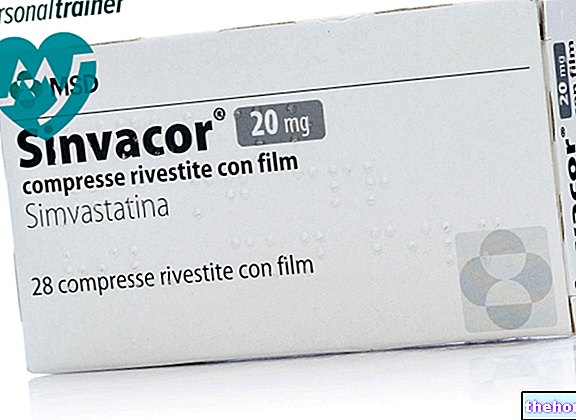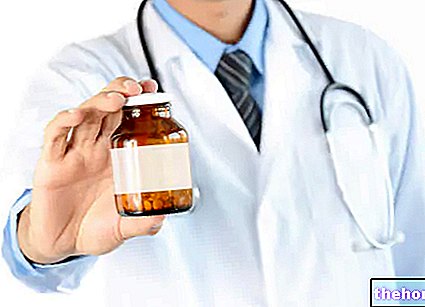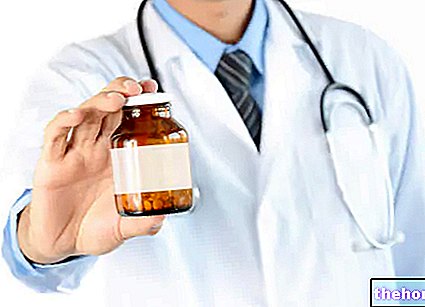Active ingredients: Paracetamol
EFFERALGAN 500 mg tablets
Efferalgan package leaflets are available for packs:- EFFERALGAN 500 mg tablets
- EFFERALGAN 500 mg effervescent tablets
- EFFERALGAN ADULTS 1000 mg effervescent tablets, EFFERALGAN ADULTS 1000 mg film-coated tablets
- EFFERALGAN CHILDREN 30 mg / ml syrup
- EFFERALGAN NURSING 80 mg suppositories, EFFERALGAN EARLY CHILDHOOD 150 mg suppositories, EFFERALGAN CHILDREN 300 mg suppositories
- EFFERALGAN 330 mg effervescent tablets with vitamin C
Why is Efferalgan used? What is it for?
Symptomatic treatment of mild to moderate pain and febrile conditions in adults and children.
Symptomatic treatment of arthritic pain.
Contraindications When Efferalgan should not be used
Hypersensitivity to paracetamol or propacetamol hydrochloride (precursor of paracetamol) or to any of the excipients.
Precautions for use What you need to know before taking Efferalgan
Paracetamol should be administered with caution to patients with mild to moderate hepatic insufficiency (including Gilbert's syndrome), severe hepatic insufficiency (Child-Pugh> 9), acute hepatitis, concomitant treatment with drugs that impair liver function, deficiency of glucose-6-phosphate-dehydrogenase, haemolytic anemia.
Paracetamol should be administered with caution in subjects with renal insufficiency (creatinine clearance ≤ 30 ml / min).
Use with caution in case of chronic alcoholism, excessive alcohol intake (3 or more alcoholic drinks per day), anorexia, bulimia or cachexia, chronic malnutrition (low reserves of hepatic glutathione), dehydration, hypovolemia.
During treatment with paracetamol, before taking any other drug, check that it does not contain the same active ingredient, as serious adverse reactions can occur if paracetamol is taken in high doses.
Also, before combining any other medication, contact your doctor. See also the "Interactions" section.
Interactions Which drugs or foods can modify the effect of Efferalgan
Tell your doctor or pharmacist if you have recently taken any other medicines, even those without a prescription.
Paracetamol can increase the chance of side effects if given at the same time as other drugs.
The administration of paracetamol can interfere with the determination of uricaemia (by the phosphotungstic acid method) and with that of blood glucose (by the glucose-oxidase-peroxidase method).
During therapy with oral anticoagulants it is recommended to reduce the doses.
Patients being treated with rifampicin, cimetidine or antiepileptic drugs such as glutethimide, phenobarbital, carbamazepine should use paracetamol with extreme caution and only under strict medical supervision.
Patients being treated with phenytoin should avoid taking high and / or chronic doses of paracetamol.
A dose reduction of paracetamol should be considered when administered concomitantly with probenecid.
Warnings It is important to know that:
Do not administer for more than 10 consecutive days without consulting your doctor.
High or prolonged doses of the product can cause high-risk liver disease and alterations, even serious ones, in the kidney and blood.
In case of prolonged use it is advisable to monitor liver and kidney function and blood count.
Do not administer during chronic treatment with drugs that can determine the induction of hepatic monooxygenases or in case of exposure to substances that can have this effect.
In case of allergic reactions the administration should be discontinued.
Pregnancy and breastfeeding
Ask your doctor for advice before taking any medicine. Clinical experience with the use of paracetamol during pregnancy and lactation is limited.
Pregnancy
Epidemiological data on the use of therapeutic doses of oral paracetamol indicate that no undesirable effects occur in pregnant women or on the health of the fetus or newborns. Reproductive studies with paracetamol have shown no malformation or foetotoxic effects. Paracetamol must, however, , to be used during pregnancy only after a "careful evaluation of the risk / benefit ratio.
In pregnant patients, the recommended posology and duration of treatment should be strictly observed.
Feeding time
Paracetamol is excreted in breast milk in small quantities. Rash has been reported in breast-fed infants. However, administration of paracetamol is considered compatible with breastfeeding. However, caution should be used when administering paracetamol to breastfeeding women.
Dosage and method of use How to use Efferalgan: Dosage
Method of administration
Oral use.
The tablets should be swallowed whole with a glass of water.
Dosage
EFFERALGAN 500 mg tablets are reserved for adults and children weighing more than 26 kg (approximately 8 years or older). In children, the dosage regimens based on body weight must be respected and therefore the suitable formulation must be chosen. The correspondence between age and weight is only indicative.
Children weighing between 26 kg and 40 kg (aged between 8 and 13 years approximately): the dosage is 1 tablet for each administration, to be repeated, if necessary, after an interval of at least 6 hours, without exceeding 4 tablets per day.
Adolescents weighing between 41 kg and 50 kg (aged between 12 and 15 years approximately): the dosage is 1 tablet each administration, to be repeated, if necessary, after an interval of at least 4 hours without exceeding 6 tablets per day.
Adults and adolescents weighing more than 50 kg (approximately 15 years or more): the usual unit dosage is one tablet for each administration, to be repeated, if necessary, after an interval of at least 4 hours.
3 g of paracetamol per day, or 6 tablets per day, should not be exceeded, respecting an interval of at least 4 hours between administrations.
Adults: in case of more intense pain, two tablets can be taken at a time for a maximum of 3 times a day (3 g of paracetamol), always respecting an interval of at least 4 hours between doses.
Frequency of administration
Regular administration avoids fluctuating pain or fever levels.
- in children, the interval between administrations should be regular, both day and night, and should preferably be at least 6 hours.
- in adults and adolescents, an interval of at least 4 hours between administrations must always be respected.
Kidney failure
In case of severe renal insufficiency (creatinine clearance less than 10 ml / min), the interval between dosing should be at least 8 hours. Do not exceed 3 g of paracetamol per day, ie 6 tablets.
Maximum recommended dosage
In adults and adolescents weighing more than 40 kg: the total dosage of paracetamol should not exceed 3 g / day.
Overdose What to do if you have taken an overdose of Efferalgan
There is a risk of intoxication, especially in patients with liver disease, in cases of chronic alcoholism, in patients with chronic malnutrition, and in patients receiving enzyme inducers. In these cases, overdose can be fatal.
Symptoms generally appear within the first 24 hours and include: nausea, vomiting, anorexia, paleness, malaise and diaphoresis.
Overdose with acute ingestion of 7.5 g or more of paracetamol in adults and 140 mg / kg body weight in children, causes hepatic cytolysis which can progress to complete and irreversible necrosis, resulting in hepatocellular failure, metabolic acidosis and encephalopathy which can lead to coma and death. At the same time, increased levels of hepatic transaminases (AST, ALT), lactate dehydrogenase and bilirubin are observed, together with a decrease in the prothrombin value which may occur 12 to 48 hours after administration.
Clinical symptoms of liver damage usually manifest themselves after one or two days, and reach their maximum after 3 - 4 days.
Emergency measures
- Immediate hospitalization.
- Before starting treatment, take a blood sample to determine plasma paracetamol levels as soon as possible, but not earlier than 4 hours after the overdose.
- Rapid elimination of paracetamol by gastric lavage.
- Treatment following an overdose includes the administration of the antidote, N-acetylcysteine (NAC), intravenously or orally, if possible, within 8 hours of ingestion. NAC may, however, give some degree of protection even after 16 hours.
- Symptomatic treatment.
Liver tests should be performed at the start of treatment, which will be repeated every 24 hours.
In most cases, liver transaminases return to normal within a week or two with full recovery of liver function. In very severe cases, however, liver transplantation may be necessary.
In case of accidental ingestion / intake of an excessive dose of EFFERALGAN, notify your doctor immediately or go to the nearest hospital.
IF YOU ARE IN ANY DOUBT ABOUT THE USE OF EFFERALGAN, CONTACT YOUR DOCTOR OR PHARMACIST.
Side Effects What are the side effects of Efferalgan
Like all medicines, EFFERALGAN can cause side effects, although not everybody gets them.
Skin reactions of various types and severities have been reported with the use of paracetamol including cases of erythema multiforme, Stevens-Johnson syndrome and epidermal necrolysis.
Hypersensitivity reactions such as angioedema, larynx edema, anaphylactic shock have been reported. In addition, the following undesirable effects have been reported: thrombocytopenia, leukopenia, anemia, agranulocytosis, liver function abnormalities and hepatitis, kidney changes (acute renal failure, interstitial nephritis, haematuria, anuria), gastrointestinal reactions and dizziness.
The table below lists the adverse reactions, some of which have already been mentioned above, associated with the administration of paracetamol, resulting from post-marketing surveillance. The frequency of adverse reactions listed below is not known.
Neutropenia
Leukopenia
Abdominal pain
Quincke's edema
Hypersensitivity reactions
Increase in INR values
Erythema
Rash
In case of overdose, paracetamol can cause hepatic cytolysis which can evolve towards massive and irreversible necrosis.
Compliance with the instructions contained in the package leaflet reduces the risk of undesirable effects.
If any of the side effects gets serious, or if you notice any side effects not listed in this leaflet, please inform your doctor or pharmacist.
Expiry and Retention
Expiry: see the expiry date indicated on the package. The expiry date indicated refers to the product in intact and correctly stored packaging.
Warning: do not use the medicine after the expiry date indicated on the package.
This medicine does not require any special storage conditions.
Medicines should not be disposed of via wastewater or household waste. Ask your pharmacist how to throw away medicines you no longer use. This will help protect the environment.
KEEP THE MEDICINAL PRODUCT OUT OF THE REACH AND SIGHT OF CHILDREN
Composition and pharmaceutical form
Composition
One tablet contains
Active ingredient: paracetamol 500 mg
Excipients: hypromellose, povidone, croscarmellose sodium, glyceryl behenate, microcrystalline cellulose, magnesium stearate.
Pharmaceutical form and content
Tablets for oral use. Box of 16 tablets of 500 mg.
Source Package Leaflet: AIFA (Italian Medicines Agency). Content published in January 2016. The information present may not be up-to-date.
To have access to the most up-to-date version, it is advisable to access the AIFA (Italian Medicines Agency) website. Disclaimer and useful information.
01.0 NAME OF THE MEDICINAL PRODUCT
EFFERALGAN 500 mg tablets
02.0 QUALITATIVE AND QUANTITATIVE COMPOSITION
One tablet contains: paracetamol 500 mg
03.0 PHARMACEUTICAL FORM
Tablets for oral use
04.0 CLINICAL INFORMATION
04.1 Therapeutic indications
Symptomatic treatment of painful affections of all kinds (for example headache, toothache, stiff neck, joint and lumbosacral pain, menstrual pain, minor surgical interventions) and of fever and cold conditions (flu and cold).
04.2 Posology and method of administration
Adults (over 15 years): 1 tablet 3-4 times a day. In severe cases, the daily dosage can be increased to 3 g (2 tablets 3 times a day). Do not exceed the maximum dose of 6 tablets per day.
Children from 13 to 15 years: 1 tablet 1-3 times a day.
The interval between the different administrations must not be less than 4 hours.
04.3 Contraindications
Hypersensitivity to paracetamol or to the components of the formulation. Paracetamol products are contraindicated in patients with severe haemolytic anemia.
Severe hepatocellular insufficiency.
04.4 Special warnings and appropriate precautions for use
High or prolonged doses of the product can cause high-risk liver disease and alterations, even serious ones, in the kidney and blood.
Do not administer during chronic treatment with drugs that can determine the induction of hepatic monooxygenases or in case of exposure to substances that can have this effect (see 4.5).
Paracetamol should be administered with caution in subjects with renal or hepatic insufficiency.
Use with caution in subjects with glucose-6-phosphate dehydrogenase deficiency.
During treatment with paracetamol, before taking any other drug, check that it does not contain the same active ingredient, as serious adverse reactions can occur if paracetamol is taken in high doses.
Instruct the patient to contact the physician before associating any other medication. See also "Interactions".
In case of allergic reactions the administration should be discontinued.
Do not administer for more than 10 consecutive days without consulting your doctor.
04.5 Interactions with other medicinal products and other forms of interaction
In the course of therapy with anticoagulants it is recommended to reduce the doses.
Use with extreme caution and under strict control during chronic treatment with drugs that can determine the induction of hepatic monooxygenases or in case of exposure to substances that can have this effect (for example rifampicin, cimetidine, antiepileptics such as glutethimide, phenobarbital, carbamazepine) .
The administration of paracetamol can interfere with the determination of uric acid (by the method of phosphotungstic acid) and with that of blood glucose (by the method of glucose-oxidase-peroxidase).
04.6 Pregnancy and lactation
Use only in cases of real need and under the direct supervision of a doctor.
04.7 Effects on ability to drive and use machines
It does not affect the ability to drive or use machines.
04.8 Undesirable effects
Skin reactions of various types and severities have been reported with the use of paracetamol including cases of erythema multiforme, Stevens-Johnson syndrome and epidermal necrolysis.
Hypersensitivity reactions such as skin rash with erythema or urticaria, angioedema, larynx edema, anaphylactic shock have been reported. In addition, the following undesirable effects have been reported: thrombocytopenia, leukopenia, anemia, agranulocytosis, liver function abnormalities and hepatitis, kidney changes (acute renal failure, interstitial nephritis, haematuria, anuria), gastrointestinal reactions and dizziness.
The appearance of allergic reactions leads to the suspension of treatment. In case of overdose, paracetamol can cause hepatic cytolysis which can evolve towards massive and irreversible necrosis.
04.9 Overdose
Symptoms: acute intoxication is manifested by nausea, vomiting, anorexia, pallor, abdominal pain; these symptoms usually appear within the first 24 hours. Massive overdose can cause hepatic cytolysis which can evolve towards complete and irreversible necrosis, with consequent hepatocellular insufficiency, metabolic acidosis and encephalopathy, which can lead to coma and death.
Simultaneously, an increase in the levels of hepatic transaminases, lactic dehydrogenase and bilirubin and a reduction in prothrombin levels are observed, which can occur in the 12-48 hours following ingestion.
Methods of intervention:
Immediate hospitalization.
Urgent gastric lavage.
Treatment of overdose, as early as possible, by intravenous or oral administration of N-acetylcysteine as an antidote. The dosage is 150 mg / kg / i.v. in glucose solution in 15 minutes, then 50 mg / kg in the following 4 hours and 100 mg / kg in the following 16 hours, i.e. a total of 300 mg / kg in 20 hours.
05.0 PHARMACOLOGICAL PROPERTIES
05.1 Pharmacodynamic properties
Analgesics - anilide antipyretics (atc: N02BE01)
05.2 Pharmacokinetic properties
Paracetamol is rapidly and almost completely absorbed in the gastrointestinal tract and is rapidly distributed in body fluids. The plasma peak is reached in 30-60 minutes.
The share of the drug bound to plasma proteins is low. The plasma half-life of paracetamol is 2-2½ hours.
Paracetamol is metabolised in the liver: 60-80% is excreted in the urine in the form of glucuronide conjugates, 20-30% as sulfate conjugates and less than 5% in unchanged form. A small fraction (less than 4%) is converted, by the intervention of cytochrome P450, into a metabolite, which is subsequently inactivated by conjugation with glutathione.
In case of massive overdose, the amount of this metabolite is increased.
05.3 Preclinical safety data
Paracetamol administered to common laboratory animals and by various routes (oral, i.p. subcutaneous) proved to be devoid of ulcerogenic properties, even after prolonged administration. It was also found devoid of embryotoxic and teratogenic effects and was well tolerated even in specific carcinogenesis studies.
06.0 PHARMACEUTICAL INFORMATION
06.1 Excipients
Hypromellose, povidone, croscarmellose sodium, glyceryl behenate, microcrystalline cellulose, magnesium stearate.
06.2 Incompatibility
No specific incompatibilities are known.
06.3 Period of validity
3 years
06.4 Special precautions for storage
None
06.5 Nature of the immediate packaging and contents of the package
Aluminum / polythene blister.
Pack of 16 tablets
Box of 20 tablets
Pack of 100 tablets
06.6 Instructions for use and handling
-----
07.0 MARKETING AUTHORIZATION HOLDER
Laboratoires UPSA - Agen (France), represented in Italy by: Bristol-Myers Squibb S.r.l. Via del Murillo, km 2,800 - Sermoneta (LT)
08.0 MARKETING AUTHORIZATION NUMBER
16 tablets: A.I.C. N ° 026608125
20 tablets: A.I.C. N ° 026608137
100 tablets: A.I.C. N ° 026608149
09.0 DATE OF FIRST AUTHORIZATION OR RENEWAL OF THE AUTHORIZATION
June 12, 1996
10.0 DATE OF REVISION OF THE TEXT
February 2003









.jpg)


















